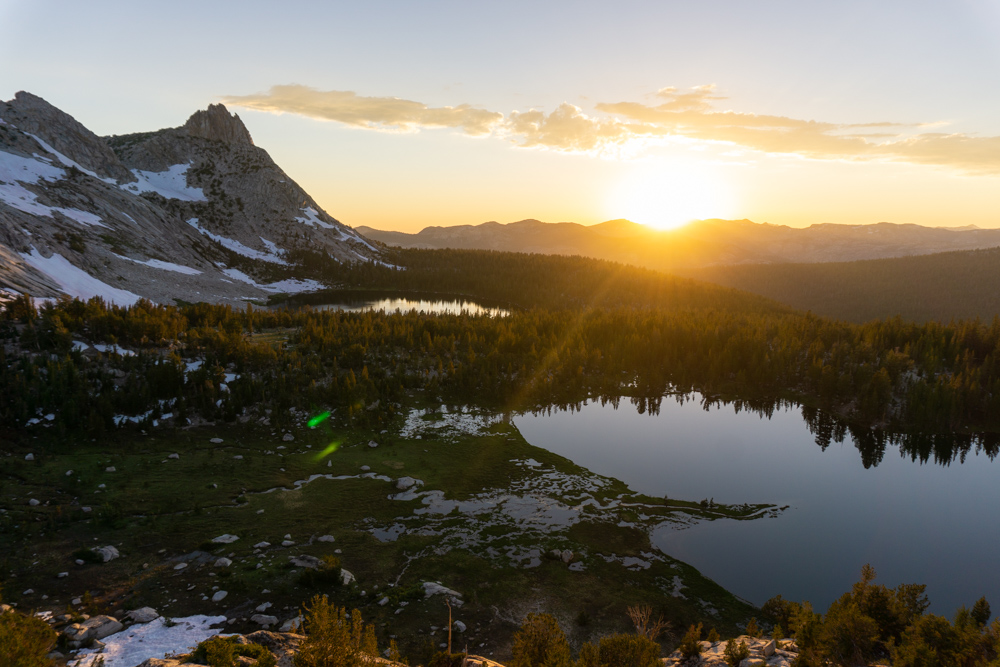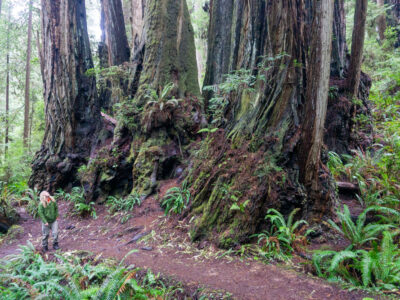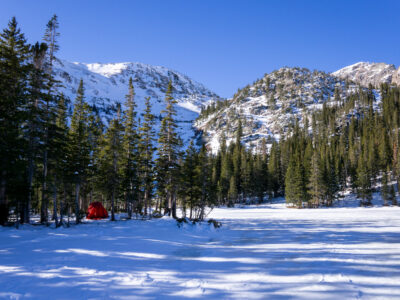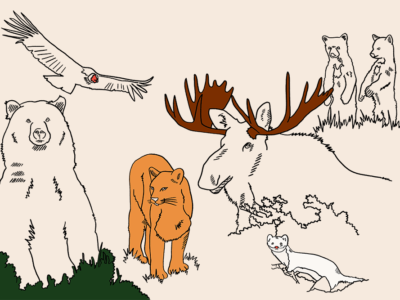23 Mar Young Lakes, Yosemite National Park
guides // backpacking // northern california
Young Lakes, Yosemite National Park, California
This trip to the Young Lakes is probably my favorite low effort-high reward trip in Yosemite National Park. You only have to hike 6.5 miles to camp on top of what feels like the entire Yosemite High Country. As an added benefit, it seems like nobody else knows about this far corner of the park, because we barely saw anyone out there – and we were there during peak season! This camping spot is also specifically majestic because the sunset aligns with a dip in the distant mountains, which means that you get a lot of daylight and a dramatic sunset.
Plus, the perfect campsite is super-close to Upper Young Lake, so you can attempt a swim in the ice cold water. I have a great picture of Dylan jumping into the lake, right before he shot back out of the water like a frosty dolphin.
Quick Notes
Pictures taken July 2017
Total Distance: 13.5 miles
Elevation Gain: 1,553 feet
Difficulty: Easy/Medium
Days: 1 Night
Hike Type: Out-and-back
Trailhead: Tuolumne Meadows Wilderness Center (23. Young Lakes via Dog Lake)
Seasons: Summer & Fall
Permit Requirement: Yes, Year-Round
Camping: Dispersed Camping
Map: National Geographic Yosemite National Park
Water: Filter along the way
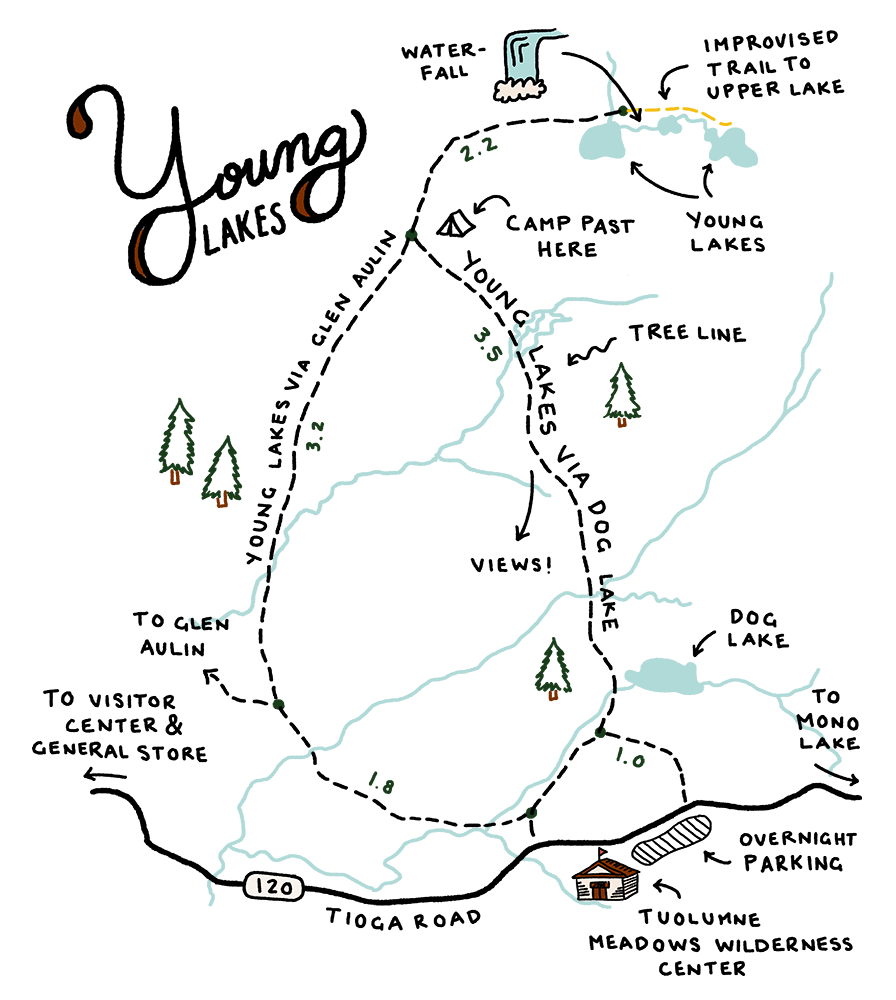

When to Go
The best months to go on this trip are June through October because Tioga Road, which gets you to the trailhead, closes for the winter. Tioga Road opens around late May and then closes back up in October. The national park has been keeping track of opening and closing dates of Tioga Road since 1980.
Keep in mind that even if Tioga Road is open early in the season, the trail may still be snowy enough for snowshoes and winter gear. We’ve seen snow on the ground in the Yosemite High Country as late as July, so check current conditions before you go. The best way to check current conditions is to either call the Tuolumne Meadows Wilderness Center or check the current conditions report published by Yosemite Park Rangers every couple weeks. The Yosemite Conservancy also operates four webcams across the park where you can check current conditions in real time. Just remember to check the cams during the day when it’s light out – it may seem obvious, but I’ve definitely made that mistake (: P).
Checking Current Conditions
Tuolumne Meadows Wilderness Center (209) 372-0309
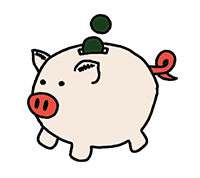
Trip Cost
Park Entrance Fee*
Wilderness Permit Fee
Wilderness Permit Reservation
$35
Free
$5 per person + $5 per reservation
*If you know that you’re going to be going to a national park more than three times in a year, it’s worth it to buy a National Parks Pass. They’re $80 and sold online, at all REI locations, and National Park Visitor Centers.
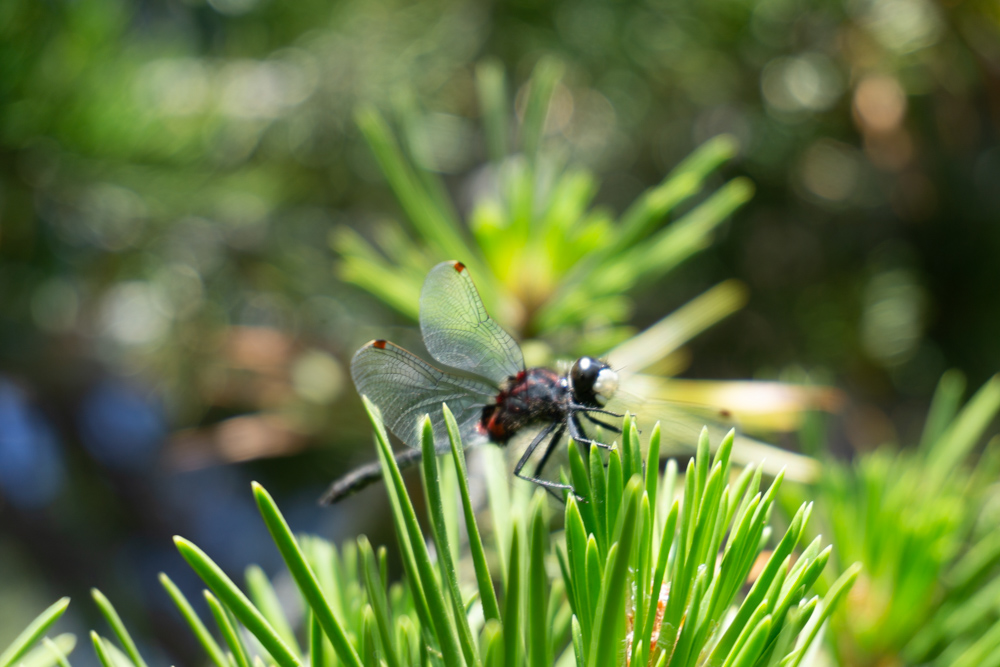
Sweet dragonfly pic.
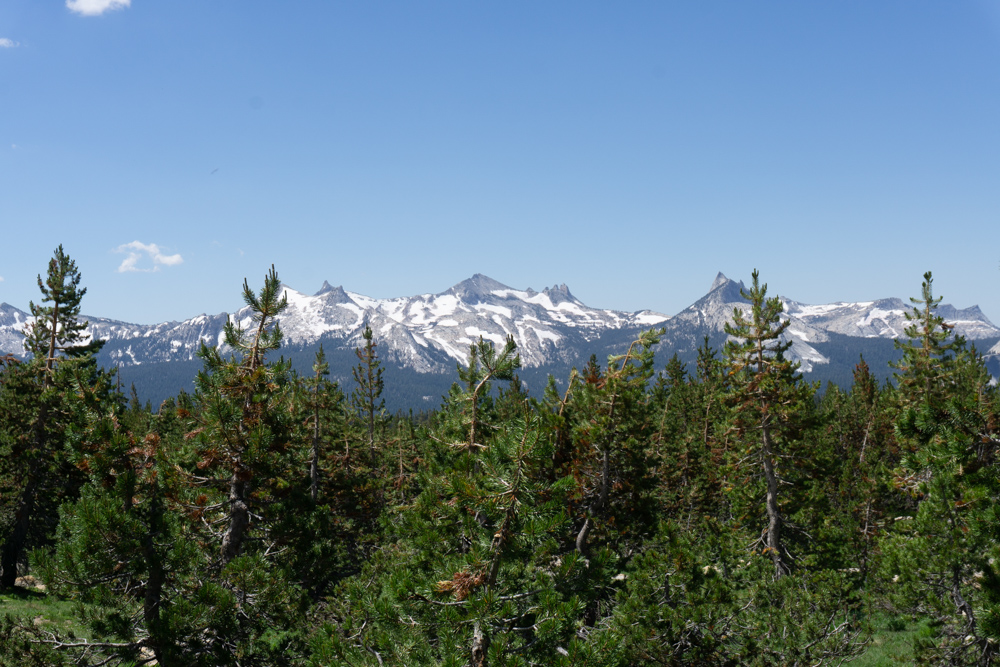
Snow-capped mountain views along the trail.
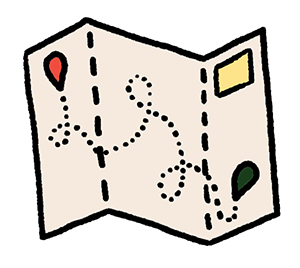
Before You Go
Wilderness permits are required for all overnight trips in the Yosemite backcountry. While you can get first-come-first-serve permits at the Tuolumne Meadows Wilderness Center, the best way to make sure you’ll have a permit for your trip is to make an online reservation. Also, if you make a reservation, you can pretty much skip the long line at the Wilderness Center when you pick up your permit. Permits in Yosemite can be reserved up to 24 weeks in advance of your trip. Click here to learn how to make online backcountry permit reservations in Yosemite. For your permit application, the official trailhead names for this trip are “Young Lakes via Dog Lake” (22C) and “Young Lakes via Glen Aulin” (23). You can pick either one, but the Glen Aulin option will add 1.5 miles to your trip.
If you didn’t end up making a reservation, there’s still hope. The park saves 8 out of 12 first-come-first-serve permits at this trailhead for more spontaneous travelers. If you really really want to do this exact trip, try to arrive at the Wilderness Center early (think before 7:00 AM) to snag one of these permits. If you’re in the park a day early, you can also pick up your permit after 11:00AM the day before you start your hike. This can increase the chances of getting the permit you want by a lot, especially on the weekends.
After all the waiting, if you get to the front of the line and all the permits for this trail are gone, you can also try out this great adventure that also starts at the Tuolumne Meadows Wilderness Center.
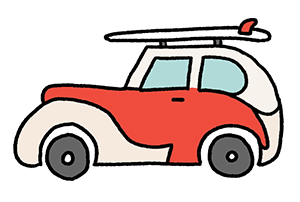
Getting There
The trail starts at the Tuolumne Meadows Wilderness Center on Tioga Road at the far eastern side of the park. If you’re entering Yosemite from the west entrances, budget about two extra hours to get across the park to this center. Yosemite traffic can be brutal in the summer, so it’s best to plan on being in the park very early. On a typical summer weekend, we usually shoot for arriving at the Tuolumne Wilderness Center at or before 7:30 AM – and we’re usually the last people in the parking lot. The parking situation here is quite complicated so refer to the handy sketch to the right if you don’t want to get your car towed.
Once at the wilderness center, pick up your permit and review the park rules with a ranger. On a typical summer morning, there will be a very long line of people waiting to get permits. The best way to skip this line is to make a permit reservation ahead of time. At 8:00AM when the ranger station opens, a ranger will process all the people with reservations first, then get all the people without a reservation, and then finally process the people waiting for John Muir Trail permits (seems like this is always the biggest group).
One thing to keep in mind is that there is no convenience store at the ranger station. The closest place to stock up on last minute supplies is about 1 mile west on Tioga Road at the Tuolumne Meadows Store. The store is pretty small but has all the essentials like water, ice cream and Cliff Bars – and yes, ice cream is an essential and they have those new double-dipped Magnum bars that I like. They even have microwavable breakfast burritos that you can microwave in the store.
To get to the trailhead from the parking lot, you have to cross Tioga Road and then walk along the road until you find the trailhead. It’s not too hard to find, but it can be a bit frustrating so I included the trailhead in the map up above.
Dispersed Camping
Yosemite National Park has some of my favorite rules for backcountry camping of the entire National Park System. They allow “dispersed camping,” which means that you can camp anywhere in the park as long as you hike at least four miles away from the trailhead and pitch your tent at least 100 feet away from the trail and from water. We try to pick campsites that are on durable surfaces like dirt or rock, near-ish water (for easy filtering), and in a location where it would be hard to see us from the trail. Never camp on any type of vegetation; the growing season for the plants in the Yosemite High Country is so short that it’s best not to squish them.
If you are camping below 10,000 feet in elevation (most of this trail is below 10,000 feet), you are allowed to have a fire in the backcountry (if there’s no fire ban in effect). If you want a fire, you have to find a previously established fire ring. The park rangers make these, so take care of them and don’t make your own. We almost never have a fire though, because no matter how careful you are, back country fires are still very risky and we really don’t want to put Yosemite in danger.
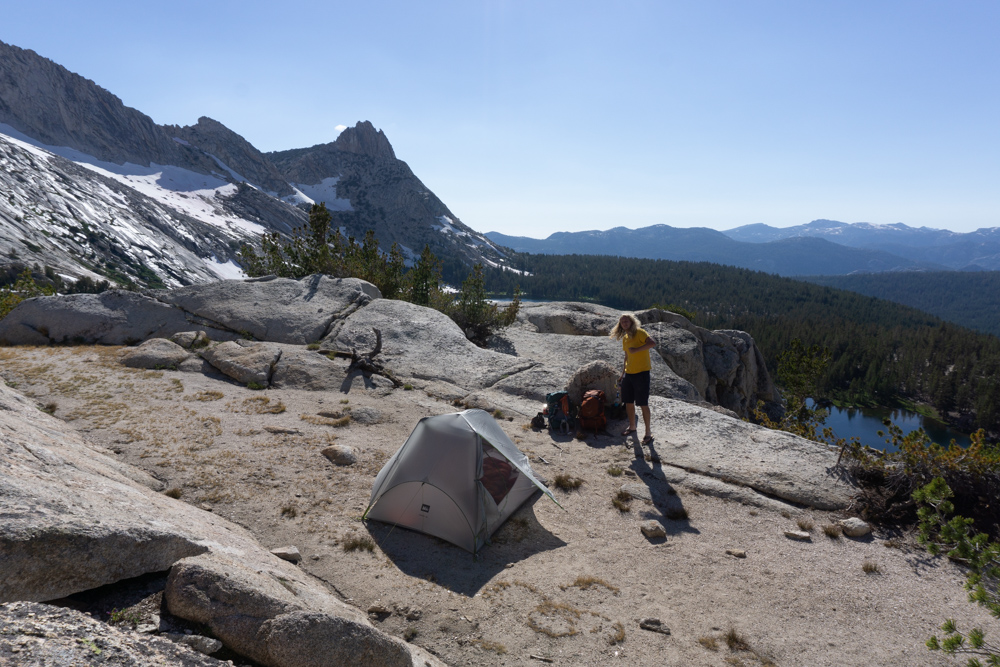
Actually one of the best places we’ve ever camped.
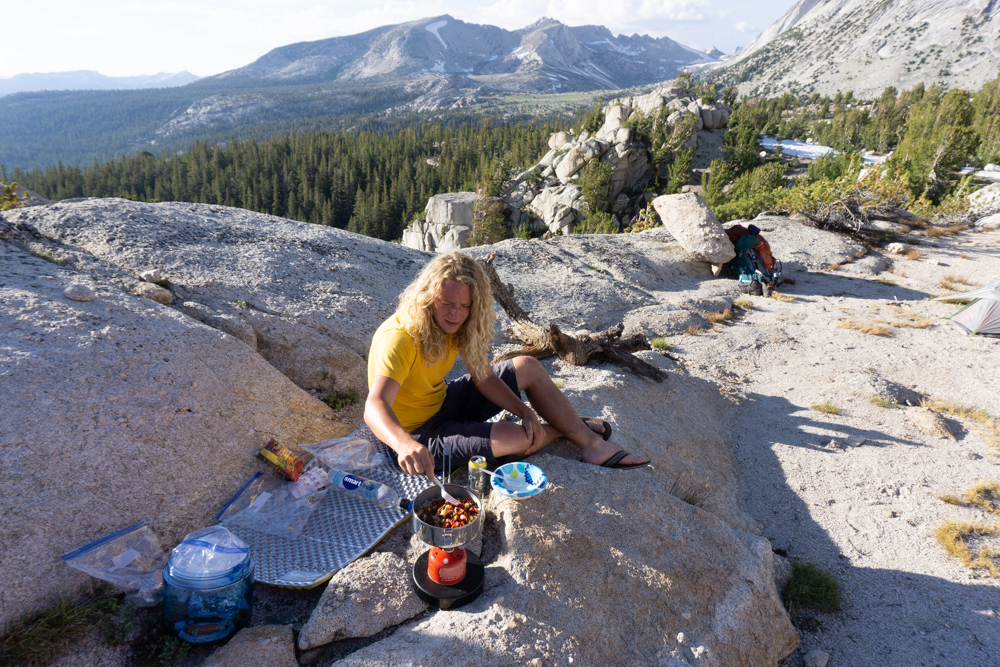
Our scenic dining set-up.
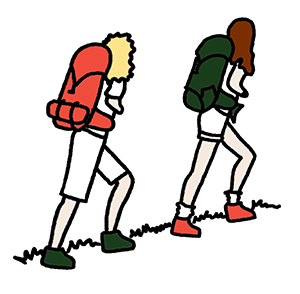
On the Trail
The trail starts out in the forest for a fairly uneventful 2 miles of hiking. There’s a spur trail early on that’ll take you to Dog Lake, which is a pretty standard, tree-lined High Sierra lake. In late summer, clouds of freakishly large dragonflies like to hang out in the trees next to the lake.
After about 2.5 miles from the start, the trees open up and you’ll get magnificent panoramic views of the peaks to the southwest. The trail in this area follows a creek so filtering water on the trail is quite easy. It’s also a great place to stop and rest because it’s flat and there’s a bunch of “rock furniture” to sit on.
As you follow the trail upwards, the forest closes back up again and then leads you straight to Lower Young Lake. You can stop here and camp along the banks of this beautiful lake or you can continue up to Upper Young Lake.
This part of the hike gets a little bit more improvised because there’s no clear trail to the upper lake. There’s probably a couple ways to get there, but this is how we did it: We tried our best and ended up with what I’ll call “the waterfall route” because you have to scramble up the side of a small twenty to thirty foot waterfall. It’s not too difficult, but you do have to be careful climbing with a big backpack, because the branches surrounding the waterfall are very good at snagging stuff. If you don’t want to try the waterfall route, I think there may be an easier and flatter route farther north of the two lakes. As long as you’re going east, you’ll end up at the right place eventually.
For the “waterfall” route, head east along the banks of the lower lake until you get to a rocky area where a creek flows into the lake. It’s a pretty wide and shallow creek, so you’ll have to navigate across some scattered rocks. Depending on water flow that year, you may even have to make a couple small water crossings. After the crossing, you’ll continue directly east until you get to a rocky thirty foot cliff. If you explore the cliff from side to side, you’ll (hopefully) end up finding a waterfall where you can scramble up to the top of the cliff.
If you don’t find the waterfall, there will probably be some areas in the rocky cliff that are a bit less steep and a lot more climbable than other parts. Additionally, if you carry some rope, you can always climb the cliffs without your pack and then pull your pack up the wall. From the top of the cliff, it’s a straight shot to the lake and some top-notch camping spots.
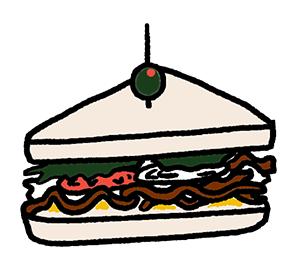
After the Hike
The nearby Tuolumne Meadows market makes a pretty good basic burger, but if you’re looking for something more filling and are heading west towards the Bay Area, there’s a very good sandwich shop in Oakdale called The Cottonwood Café. We go here every single time we visit Yosemite. Their portions are big and somehow they’ve been able to source the freshest pineapple and cantaloupe in the state – and they give you a slice of fruit with every order.
Supply List
The Usual List
Backpack
Tent
Sleeping Bag
Sleeping Pad
Sleeping Bag Liner
Camp Stove
Lighter or Matches
Cooking Pot
Food
Water Vessel
Water Filter
Headlamp
Clothing
Trip Specific Things
Bear Canister
The park requires you carry one. It keeps bears and other forest friends from getting into your food and other smelly things. We use the BearVault BV450 Food Container and we love it. It’s durable, light and fits all of our food for two to three day trips. If you don’t own a bear canister, you can rent one for $5 at the Tuolumne Meadows Wilderness Center.
SMART Water Bottle with Small Sawyer Filter
This trail has fairly consistent access to creeks and streams along the way. On trails with consistent water access, we usually just fill up a SMART water bottle, screw in the Sawyer filter and drink straight from the filter spout. It saves us time, and makes it to where we don’t have to unpack our entire backpack to get to our water reservoir. Why specifically SMART water bottles? They’re durable and somehow one of the only bottles that the Sawyer filter is compatible with.
Rain Jacket
You’ll be very prepared for the daily 2pm Sierra Nevada thunderstorm.
Thinking about doing this trip? Have any questions? Comment down below!

